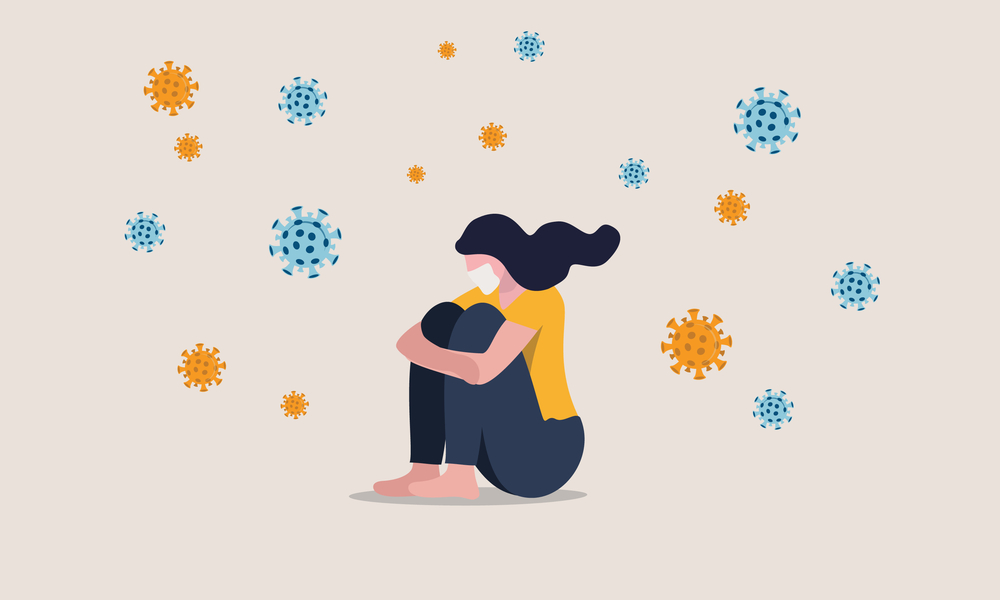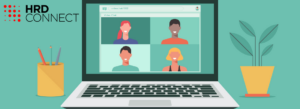Are you ready for the post-pandemic mental health crisis?
- 5 Min Read
Getting back to business does not mean business as usual. For many, there will be nothing usual about it. Louis Gagnon, CEO, Total Brain, examines the state of employee mental health and care post-pandemic and what HR and business leaders must do to create a new kind of support for the new normal.
- Author: Louis Gagnon
- Date published: Jun 4, 2020
- Categories

The physical impacts of COVID-19 are staggering. The United States alone is home to nearly two million confirmed cases and just recently exceeded the grim milestone of 100,000 deaths. COVID-19 has disrupted our lives and our livelihoods. Countless individuals and families are living in isolation. Unemployment claims are surging. According to the International Labour Organization (ILO), half of the world’s workforce faces Covid-19 related job threats.
The wide-ranging emotional, physical, social and economic toll of this insidious virus will be felt for many years to come. Your employees will be returning to the office; many with emotional “battle” scars. In fact, working Americans’ risk of addiction, depressive disorder and PTSD has doubled between February and April 2020, according to The Mental Health Index: U.S. Worker Edition powered by Total Brain in partnership with One Mind at Work. Not surprising, feelings of stress rose 38%, anxiety 54% and depressive mood 61%. Data shows that the marked spike in declining mental health corresponds with the rise in U.S. COVID-19 cases.
Further, The Mental Health Index tells us that while deteriorating mental wellness is consistent among all age groups, generational response to these unprecedented times varies. Employers take note; a one-size-fits-all approach to building a mentally healthy workplace is not a good option. Consider this:
- Ages 20-39: reported more intense feelings of stress, anxiety, and depressed mood throughout the measurement period.
- Over 40: demonstrated the greatest increase in depressive disorder, PTSD and addiction since early February, with a significant 4.7-fold increase in the number of people 60 and older experiencing symptoms of PTSD during this time.
- Ages 40-59: revealed the second highest levels of stress, anxiety and depressed mood, but the sharpest increase over the measurement period. Anxiety levels are up a whopping 83%.
The Mental Health Index: U.S. Worker Edition will be updated monthly. The Index contains data drawn from a weekly randomized sample of 500 working Americans taken from all walks of life and regions. The data is not survey data by nature. It comes from a mix of validated tasks and questions that are part of a unique neuroscientific assessment of the Total Brain. The sample is drawn from a universe of U.S. workers that include most U.S. regions, job levels, occupations, industries and both public and private organisations. The Mental Health Index enables corporations to measure mental health progress and performance against a valid national benchmark.
Despite all the tragic repercussions, this global pandemic presents a unique opportunity for corporations to rethink emotional wellbeing and treat mental health on par with physical health. It will take a fresh mindset and a willingness to provide innovative services and resources in new ways. As businesses place a keen eye on opening their shuttered doors, here are a few key considerations when seeking to build a supportive environment and a resilient, productive workforce.
- Self- screening and self-monitoring: Do your employees have easy access to screening and monitoring tools that can help them measure their risk? Am I sad or depressed? Am I clinically anxious or understandably nervous?
- Communication: How are you communicating mental health resources? Do your employees know what is available to them?
- Access to Care: Can your employees access resources in a way that allows for privacy and mitigates stigma?
- Access to Self-care: Do you offer a self-care digital component to your program at a time when the health care system is overwhelmed?
- Flexibility: Do your mental health programs offer flexibility to meet the needs of a broad demographic? Are their options for all people to participate?
- Pragmatic: Are you being realistic about what can be accomplished with given human and financial resources?
- Metrics: Do you have established metrics and tools in place to measure program engagement, progress and performance?
Getting back to business does not mean business as usual. For many, there will be nothing usual about it. Quite the contrary. Getting back to business means transforming your organisation in a way that supports the needs of your employees and enables them to utilize their talent and skills to the best of their ability. Lead with compassion. Lead with kindness. Lead with your employees’ mental health an ever-present priority.
Louis Gagnon is the CEO of Total Brain, a mental health a mental health and brain performance self-monitoring and self-care platform. He is Advisor to TPG Capital, a top-tier US private equity firm who named him CEO of Ride, a portfolio company that he restructured. As a corporate executive, Louis held dual Chief Product Officer and Chief Marketing Officer roles at Audible/Amazon, Yodle and Monster Worldwide. As an entrepreneur, Louis created and led five business and social enterprises on four continents, many of which were in the field of reproductive health. He received a Bachelor of Business Administration from Laval University in Quebec City and a Master of Science in Marketing from HEC-Montreal. His work has been featured in a number of management books and magazines including The Economist.








